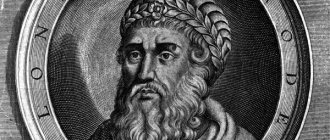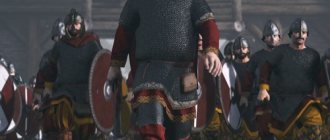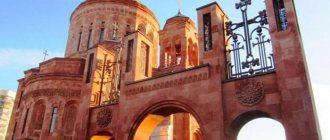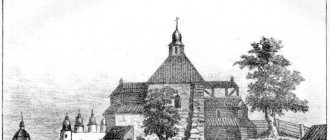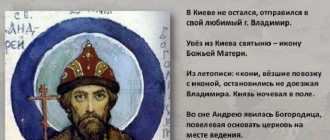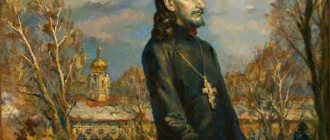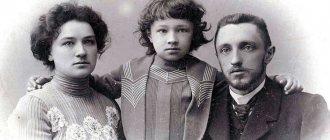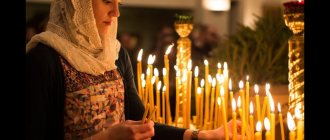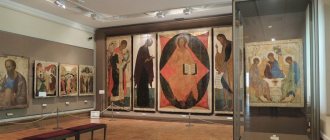The Romanov dynasty traces its origins to Tsar Mikhail Fedorovich , elected to the Russian throne on March 3, 1613. And almost 200 years later, Emperor Paul I in 1797 issued the Law on Succession to the Throne, according to which the right to the throne was reserved for every member of the House of Romanov, regardless of his gender, with the exception of those who voluntarily renounced their rights to it.
Article on the topic First Romanov. How Tsar Mikhail Fedorovich reigned, but did not rule
The reign of the Romanovs can be divided into three periods.
The first is associated with the reign of Mikhail Fedorovich (1613-1645), his son Alexei Mikhailovich (1645–1676) and son Alexei Mikhailovich Fedor Alekseevich (1676–1682).
The second is associated with the emergence of a new title for the monarch in the Russian Empire: emperor. It includes the periods of the reign of Peter the Great (1682–1725), Catherine I (1725–1727), Peter II (1727–1730), Anna Ioannovna (1730–1740), Ivan VI (1740–1741), Elizabeth (1741– 1761), Peter III (1761–1762) and Catherine II the Great (1762–1796).
The last period occurred during the reigns of Paul I (1796–1801), Alexander I (1801–1825), Nicholas I (1825–1855), Alexander II (1855–1881) and Alexander III (1881–1894) , when the throne in the House of Romanov became transmitted through the direct male line according to the decree of Paul I on succession to the throne.
Were not long-lived
Most of the Russian tsars and emperors from the Romanov dynasty lived rather short lives. Mikhail Fedorovich lived for 49 years, during the years of his reign he managed to restore centralized power in the country. Only Peter I, Elizaveta I Petrovna, Nicholas I and Nicholas II lived more than 50 years, and Catherine II and Alexander II lived more than 60 years. No one lived to be 70 years old. Peter II lived the shortest: he died at the age of 14.
Royal curse. What was the fate of the children of Peter the Great? More details
Romanov dynasty. The whole history of the reign
Reign of the Romanov dynasty (1613-1917)
For 10 centuries, the domestic and foreign policies of the Russian state were determined by representatives of the ruling dynasties. As you know, the greatest prosperity of the state was under the rule of the Romanov dynasty, descendants of an old noble family. Its ancestor is considered to be Andrei Ivanovich Kobyla, whose father, Glanda-Kambila Divonovich, baptized Ivan, came to Russia in the last quarter of the 13th century from Lithuania.
The youngest of the 5 sons of Andrei Ivanovich, Fyodor Koshka, left numerous offspring, which include such surnames as the Koshkins-Zakharyins, Yakovlevs, Lyatskys, Bezzubtsevs and Sheremetyevs. In the sixth generation from Andrei Kobyla in the Koshkin-Zakharyin family there was the boyar Roman Yuryevich, from whom the boyar family, and subsequently the Romanov tsars, originated. This dynasty ruled in Russia for three hundred years.
Mikhail Fedorovich Romanov (1613 – 1645)
The beginning of the reign of the Romanov dynasty can be considered February 21, 1613, when the Zemsky Sobor took place, at which the Moscow nobles, supported by the townspeople, proposed electing 16-year-old Mikhail Fedorovich Romanov as sovereign of all Rus'. The proposal was accepted unanimously, and on July 11, 1613, in the Assumption Cathedral of the Kremlin, Mikhail was crowned king.
The beginning of his reign was not easy, because the central government still did not control a significant part of the state. In those days, robber Cossack detachments of Zarutsky, Balovy and Lisovsky were walking around Russia, ruining the state already exhausted by the war with Sweden and Poland.
Thus, the newly elected king was faced with two important tasks: first, ending hostilities with his neighbors, and second, pacifying his subjects. He was able to cope with this only after 2 years. 1615 - all free Cossack groups were completely destroyed, and in 1617 the war with Sweden ended with the conclusion of the Stolbovo Peace. According to this agreement, the Moscow state lost access to the Baltic Sea, but peace and tranquility were restored in Russia. It was possible to begin to lead the country out of a deep crisis. And here Mikhail’s government had to make a lot of efforts to restore the devastated country.
First, the authorities took up the development of industry, for which foreign industrialists - ore miners, gunsmiths, and foundries - were invited to Russia on preferential terms. Then the turn came to the army - it was obvious that for the prosperity and security of the state it was necessary to develop military affairs, in connection with this, in 1642, transformations began in the armed forces.
Foreign officers trained Russian military men in military affairs, “regiments of a foreign system” appeared in the country, which was the first step towards the creation of a regular army. These transformations turned out to be the last in the reign of Mikhail Fedorovich - 2 years later, the tsar died at the age of 49 from “water sickness” and was buried in the Archangel Cathedral of the Kremlin.
Alexey Mikhailovich, nickname Quiet (1645-1676)
His eldest son Alexei, who, according to contemporaries, was one of the most educated people of his time, became king. He himself wrote and edited many decrees and was the first of the Russian tsars to begin signing them personally (others signed decrees for Mikhail, for example, his father Filaret). Meek and pious, Alexey earned the people's love and the nickname Quiet.
In the first years of his reign, Alexei Mikhailovich took little part in government affairs. The state was ruled by the Tsar's educator, boyar Boris Morozov, and the Tsar's father-in-law, Ilya Miloslavsky. Morozov's policy, which was aimed at increasing tax oppression, as well as Miloslavsky's lawlessness and abuses, caused popular indignation.
1648, June - an uprising broke out in the capital, followed by uprisings in southern Russian cities and in Siberia. The result of this rebellion was the removal of Morozov and Miloslavsky from power. 1649 - Alexei Mikhailovich had the opportunity to take over the rule of the country. On his personal instructions, a set of laws was drawn up - the Council Code, which satisfied the basic wishes of the townspeople and nobles.
In addition, the government of Alexei Mikhailovich encouraged the development of industry, supported Russian merchants, protecting them from competition from foreign traders. Customs and new trade regulations were adopted, which contributed to the development of domestic and foreign trade. Also, during the reign of Alexei Mikhailovich, the Moscow state expanded its borders not only to the southwest, but also to the south and east - Russian explorers explored Eastern Siberia.
Feodor III Alekseevich (1676 – 1682)
1675 - Alexey Mikhailovich declared his son Fyodor heir to the throne. 1676, January 30 - Alexey died at the age of 47 and was buried in the Archangel Cathedral of the Kremlin. Fyodor Alekseevich became the sovereign of all Rus' and on June 18, 1676 he was crowned king in the Assumption Cathedral. Tsar Fedor reigned for only six years, he was extremely not independent, power was in the hands of his maternal relatives - the Miloslavsky boyars.
The most important event of the reign of Fyodor Alekseevich was the destruction of localism in 1682, which provided the opportunity for promotion to not very noble, but educated and enterprising people. In the last days of the reign of Fyodor Alekseevich, a project was drawn up to establish a Slavic-Greek-Latin Academy and a theological school for 30 people in Moscow. Fyodor Alekseevich died on April 27, 1682 at the age of 22, without making any order regarding the succession to the throne.
Ivan V (1682-1696)
After the death of Tsar Fyodor, ten-year-old Pyotr Alekseevich, at the suggestion of Patriarch Joachim and at the insistence of the Naryshkins (his mother was from this family), was proclaimed tsar, bypassing his older brother Tsarevich Ivan. But on May 23 of the same year, at the request of the Miloslavsky boyars, he was approved by the Zemsky Sobor as the “second tsar,” and Ivan as the “first.” And only in 1696, after the death of Ivan Alekseevich, Peter became the sole tsar.
Peter I Alekseevich, nickname the Great (1682 - 1725)
Subsequently, Peter 1 became the greatest of all Russian sovereigns. He was distinguished by intelligence, will, energy, open-mindedness, purposefulness, curiosity, and great efficiency. Peter, who did not receive the knowledge he needed in childhood, studied all his life. At the same time, he was quick-tempered, cruel and merciless, and personally took part in torture and executions. Peter did not take into account the interests and life of an individual, therefore he did not stop before passing a death sentence even for his own son Alexei, who was accused of high treason.
During his reign, Peter I carried out radical changes in Russia. As a result of the reform of the state apparatus, the place of the Boyar Duma was taken by the Senate, established in 1711 to manage all affairs in the event of the departure of the sovereign. Decisions in the Senate were made by majority vote. 1721 - Peter approved the spiritual regulations, which completely subordinated the church to the state. The patriarchate was abolished, and the Holy Governing Synod was established to govern the church.
1703, May 16 - on one of the islands at the mouth of the Neva, by order of Peter I, the construction of the Peter and Paul Fortress began, which marked the beginning of a new city, named by Peter St. Petersburg. 1712 – St. Petersburg became the capital of the Russian state. In addition, Peter I created a regular army and navy... In 1721, Peter was given the title of All-Russian Emperor and Father of the Fatherland. In his quest to make Russia invincible, Peter was tireless, but his health was deteriorating. 1725, January 28 - Peter I died due to advanced illness. He was buried in the Cathedral of the Peter and Paul Fortress in St. Petersburg.
Ekaterina I Alekseevna
After the death of Peter I, two parties were formed at court. One of them, which included Repnin, Golitsyn and the Dolgorukov princes, defended the rights of Peter Alekseevich, the young grandson of Peter I. But with the support of the guards regiments, Menshikov and Tolstoy elevated the widow of Peter I, Catherine, to the throne.
The queen was also supported by influential members of the Synod - Theodosius Yanovsky and Feofan Prokopovich. The grandson of Peter the Great was declared heir to the throne. Catherine (real name Martha), daughter of the Lithuanian peasant Samuil Skavronsky, was the second wife of Peter I. When baptized into the Orthodox faith, she was named Ekaterina Alekseevna. Catherine had no political program and relied on her advisers for everything. Her reign was not marked by any special achievements. In the spring of 1727, Catherine fell ill with a fever and died on May 6.
Emperor Peter II (1727-1730)
The grandson of Peter I, the son of Tsarevich Alexei Peter II, ascended the throne. But he ruled for only three years, and in January 1730 he died of smallpox. The Romanov family in the male line ended with him. After the death of Peter II, the Supreme Privy Council decided that Russia should be ruled by the daughter of Tsar Ivan Alekseevich Anna Ioannovna, the widow of the Duke of Courland.
Empress Anna Ioannovna (1730-1740)
Anna Ioannovna did not receive proper upbringing and education and remained illiterate all her life; her favorite pastimes were horse riding and hunting. Having become empress, Anna began to elevate foreigners and bully the Russian aristocracy. All power in the state was in fact in the hands of Chancellor Osterman and Anna's favorite Ernst Johann Biron, whom she summoned from Courland.
A German, Field Marshal Minich, also became the head of the army. Maintaining the court cost 5 times more than under Peter the Great, despite the fact that there was not enough money in the treasury. And yet, some positive changes took place in the field of education: a gentry cadet corps was established for nobles, a school for educating officials was opened under the Senate, and a seminary for 35 young men was opened at the Academy of Sciences.
The reform of the postal service, as well as the creation of police in large cities, dates back to the same times. 1740, October 17 - Anna Ioannovna died at the age of 47.
Ivan VI Antonovich (1740-1741)
According to her will, the throne passed to her nephew Ivan Antonovich, who was not yet a year old. However, a year later, on the night of November 25, 1741, with the support of guards officers, the daughter of Peter I, Elizaveta Petrovna, carried out a palace coup and was proclaimed empress.
Empress Elizaveta Petrovna (1741-1761)
Elizaveta Petrovna was smart, kind, but frivolous and capricious, a real Russian lady who combined new European trends with pious Russian antiquity. One of the first steps of the new government was to invite from Holstein Elizaveta Petrovna’s nephew Karl Peter Ulrich, grandson of Peter the Great, son of Anna Petrovna, Elisabeth’s sister. The Empress declared him heir to the throne, baptized him, making him Grand Duke Peter Fedorovich, and forced him to study the Russian language and the Orthodox catechism.
As for the empress’s internal policy, it was rather conservative in nature. The biggest problem at that time was the state of the state’s finances - after the reign of Anna Ioannovna, Russia could not make ends meet. Elizaveta Petrovna found a way out of the crisis. 1754 - The Senate adopted resolutions developed by Pyotr Shuvalov on the abolition of internal customs, which was an impetus for the development of the all-Russian market and helped replenish the fairly empty treasury.
As for foreign policy, during the reign of Elizabeth the international position of the Russian Empire strengthened to a significant extent. The Russian-Swedish war ended with the signing of the Peace of Abo in 1743, according to which part of southern Finland went to Russia. The Seven Years' War was also victorious for the state. Elizaveta Petrovna died on December 25, 1761, at the age of 53, and after her death, her nephew, Peter III, ascended the Russian throne.
Peter III (1761-1762)
Unfortunately, this representative of the Romanov dynasty was a complete ignoramus and even Empress Elizabeth amazed with his ignorance. During his reign, no favorable changes occurred in the Russian Empire. As contemporaries testify, there was a nationwide murmur against Peter III. The growing discontent resulted in a new conspiracy, which matured among the guards, the soul of which was the wife of Peter III, Empress Ekaterina Alekseevna.
Among the conspirators were the Orlov brothers, Alexey and Kirill Razumovsky, and Countess Ekaterina Dashkova. 1762, July - the Izmailovsky and Semenovsky regiments swore allegiance to the empress. Catherine, accompanied by guards, arrived at the Kazan Cathedral, where she was proclaimed autocratic empress. On the same day, the Senate and Synod swore allegiance to Catherine in the Winter Palace. Peter signed his abdication and was exiled to Ropsha, where he was kept under arrest, and Catherine II ascended the throne.
Empress Catherine II the Great (1762-1796)
She wanted to strengthen the autocracy, while eliminating the influence of the highest aristocracy and the guard. So, for example, the reform of the Senate, which was carried out in 1763, turned it from a legislative body into a judicial supervisory body. 1764 - the empress formed a “commission for drawing up a new code,” in which nobles, townspeople, Cossacks and state peasants took part.
The commission in its activities was to be guided by Catherine’s “Order”. In 1775, the Empress published the “Institution for the Administration of Provinces,” the main provisions of which were to strengthen the local state apparatus and increase the role of the local nobility. The strengthening of serfdom led to the growing discontent of the peasants developing into an uprising led by Emelyan Pugachev, which ended in defeat.
But Catherine did a lot of good things for Russia. During her years in power, measures were taken to improve health care. Orphanages were opened in Moscow and St. Petersburg, where foundling children were educated. In St. Petersburg, closed institutes were established for noblewomen and townswomen. 1783 - The Russian Academy was reorganized, and Princess E.R. Dashkova became its president.
In foreign policy, the Empress continued the initiatives of Peter I and was able to accomplish what the Moscow sovereigns had been striving for for centuries. Russia gained access to the Black Sea, most of Ukraine, Belarus, Lithuania and Courland. Catherine died on November 6, 1796, leaving the throne to her son Paul.
Emperor Paul I (1796-1801)
The policy of Paul I was aimed at destroying everything that Catherine had done, which in turn caused a storm of indignation among the nobility. In the fall of 1800, a conspiracy arose against the emperor, in which Paul's associates and guards officers participated. On the night of March 11-12, 1801, the conspirators entered the Mikhailovsky Castle, where the emperor lived, and killed Paul I. The official document stated that the emperor died of an “apoplectic stroke.” Alexander I, the eldest son of Paul and his second wife Empress Maria Feodorovna, ascended the throne.
Emperor Alexander I (1801-1825)
The first half of the reign of Alexander I was marked by moderate liberal reforms. Alexander granted freedom to people exiled by order of Paul, issued a decree on the abolition of torture, and restored the validity of the Charters of 1785. All these measures, as well as the personal charm of the emperor, made him quite popular in Russian society. 1802 - ministries and the State Council were established, in 1803 a decree was issued on free cultivators.
In Russia at this time, a system of secondary and lower educational institutions was created, Kharkov, Kazan, Dorpat and St. Petersburg universities were established. In foreign policy in the first decade of the 19th century, Russia maneuvered between England and France. In 1805–1807, Russia participated in the anti-Napoleonic campaign, which resulted in the signing of the Peace of Tilsit in 1807, according to which Alexander I recognized all the conquests of Napoleon Bonaparte.
Both emperors pledged to be allies in the conduct of hostilities. However, in 1810, relations between Russia and France began to take on an openly hostile character. And in the summer of 1812, war began between the powers. The Russian army, having expelled the invaders from Moscow, completed the liberation of Europe with a triumphal entry into Paris in 1814. The successfully ended wars with Turkey and Sweden strengthened the country's international position. During the reign of Alexander I, Georgia, Finland, Bessarabia, and Azerbaijan became part of the Russian Empire. 1825 - During a trip to Taganrog, Emperor Alexander I caught a severe cold and died on November 19.
Emperor Nicholas I (1825-1855)
After Alexander's death, Russia lived without an emperor for almost a month. On December 14, 1825, an oath was announced to his younger brother Nikolai Pavlovich. That same day, an attempted coup took place, which was later called the Decembrist uprising. The day of December 14 made an indelible impression on Nicholas I, and this was reflected in the nature of his entire reign, during which absolutism reached its highest rise, expenses for officials and the army absorbed almost all state funds. During the reign of Nicholas 1, the Code of Laws of the Russian Empire was compiled - a code of all legislative acts that existed in 1835.
1826 - the Secret Committee was established, dealing with the peasant issue; in 1830, a general law on estates was developed, in which a number of improvements were designed for the peasants. About 9,000 rural schools were established for the primary education of peasant children.
1854 - the Crimean War began, ending in the defeat of Russia: according to the Paris Treaty of 1856, the Black Sea was declared neutral, and Russia was able to regain the right to have a fleet there only in 1871. It was the defeat in this war that decided the fate of Nicholas I. Not wanting to admit the error of his views and beliefs, which led the state not only to military defeat, but also to the collapse of the entire system of state power, the emperor is believed to have deliberately taken poison on February 18, 1855.
Alexander II the Liberator (1855-1881)
The next from the Romanov dynasty came to power - Alexander Nikolaevich, the eldest son of Nicholas I and Alexandra Fedorovna.
It should be noted that Alexander 2 was able to somewhat stabilize the situation both within the state and on the external borders. Firstly, under Alexander II, serfdom was abolished in Russia, for which the emperor was nicknamed the Liberator. 1874 - a decree was issued on universal conscription, which abolished conscription. At this time, higher educational institutions for women were created, three universities were founded - Novorossiysk, Warsaw and Tomsk.
Alexander II was able to finally conquer the Caucasus in 1864. According to the Argun Treaty with China, the Amur Territory was annexed to Russia, and according to the Beijing Treaty, the Ussuri Territory was annexed. 1864 - Russian troops began a campaign in Central Asia, during which the Turkestan region and Fergana region were captured. Russian rule extended all the way to the peaks of the Tien Shan and the foot of the Himalayan range. Russia also had possessions in the United States.
However, in 1867, Russia sold Alaska and the Aleutian Islands to America. The most important event in Russian foreign policy during the reign of Alexander II was the Russian-Turkish War of 1877–1878, which ended in the victory of the Russian army, which resulted in the declaration of independence of Serbia, Romania and Montenegro.
Russia received part of Bessarabia, seized in 1856 (except for the islands of the Danube Delta) and a monetary indemnity of 302.5 million rubles. In the Caucasus, Ardahan, Kars and Batum with their surroundings were annexed to Russia. The Emperor could have done a lot more for Russia, but on March 1, 1881, his life was tragically cut short by a bomb from Narodnaya Volya terrorists, and the next representative of the Romanov dynasty, his son Alexander III, ascended the throne. Difficult times have come for the Russian people.
Alexander III the Peacemaker (1881-1894)
During the reign of Alexander III, administrative arbitrariness increased significantly. In order to develop new lands, a massive resettlement of peasants to Siberia began. The government took care of improving the living conditions of workers - the work of minors and women was limited.
In foreign policy at this time, there was a deterioration in Russian-German relations and a rapprochement between Russia and France took place, which ended with the conclusion of the Franco-Russian alliance. Emperor Alexander III died in the fall of 1894 from kidney disease, aggravated by bruises received during a train accident near Kharkov and constant excessive consumption of alcohol. And power passed to his eldest son Nicholas, the last Russian emperor from the Romanov dynasty.
Emperor Nicholas II (1894-1917)
The entire reign of Nicholas II passed in an atmosphere of growing revolutionary movement. At the beginning of 1905, a revolution broke out in Russia, marking the beginning of reforms: 1905, October 17 - the Manifesto was published, which established the foundations of civil freedom: personal integrity, freedom of speech, assembly and unions. The State Duma was established (1906), without whose approval not a single law could enter into force.
Agrarian reform was carried out according to the project of P.A. Stolshin. In the field of foreign policy, Nicholas II took some steps to stabilize international relations. Despite the fact that Nicholas was more democratic than his father, popular discontent with the autocrat grew rapidly. At the beginning of March 1917, the Chairman of the State Duma M.V. Rodzianko told Nicholas II that the preservation of autocracy was possible only if the throne was transferred to Tsarevich Alexei.
But, given the poor health of his son Alexei, Nicholas abdicated the throne in favor of his brother Mikhail Alexandrovich. Mikhail Alexandrovich, in turn, abdicated in favor of the people. The republican era has begun in Russia.
From March 9 to August 14, 1917, the former emperor and members of his family were kept under arrest in Tsarskoe Selo, then they were transported to Tobolsk. On April 30, 1918, the prisoners were brought to Yekaterinburg, where on the night of July 17, 1918, by order of the new revolutionary government, the former emperor, his wife, children and the doctor and servants who remained with them were shot by security officers. Thus ended the reign of the last dynasty in Russian history.
M. Pankova
ed. storm777.ru
Two kings on the throne
At the end of the 17th century, two princes were crowned to the throne at once. After the death of Tsar Alexei Mikhailovich, the eldest son Fyodor Alekseevich reigned for a short time and died unexpectedly in 1682. According to the law of succession to the throne, the next oldest, fifteen-year-old Ivan , should have become king, but he was not distinguished by either intelligence or health. Then it was decided to crown two brothers at the same time: Ivan and ten-year-old Peter, the future Peter I. Since the older brother, due to his weakness, and the younger brother, due to his infancy, were not able to independently manage state affairs, then until Peter came of age, their eldest became the ruler of the state sister, Princess Sophia.
Article on the topic
Sophia Paleolog. How a Byzantine princess built a new empire in Russia
On the occasion of the wedding to the kingdom, royal crowns were placed on Ivan and Peter: on Ivan - the old Monomakh cap, on Peter - a new crown specially made for this occasion, called the Monomakh cap of the second outfit. Also, a double throne was made in the Kremlin court workshops. More than two hundred kg of silver were used to make it.
John V
What was the life story of the Romanovs from the branch of Tsar John V? Believing in their omnipotence, the leaders decided to introduce a limited monarchy in Russia. The Prince of Holstein (future Emperor Peter III) and “Petrov’s daughter” Elizabeth, indicated in the will of Catherine I, were not suitable for this purpose. Not giving a damn about the will of some “port washer”, they made an offer to become empress to Ivan V’s daughter Anna, but with the conditions (conditions) that her power would be partially limited by the Supreme Privy Council. She happily agreed and signed them. But here the high-born and non-high-born nobility became indignant, and everything was decided, again, by the guard, who supported not the leaders, but Anna Ioannovna. On March 1, 1730, the empress broke the “conditions” and ruled as an autocrat for ten years. The Supreme Privy Council was disbanded (its place was taken by Anna Ioannovna's favorite, the Courlander Biron), and the Governing Senate was restored. Biron was in charge of everything, and she amused herself with shooting, very accurately, and the outfits and antics of the jesters.
Hunting lovers
Many monarchs of the Romanov dynasty were passionate about hunting. Under Alexei Mikhailovich, a special Sokolniki yard was created in Moscow, and under Elizaveta Petrovna, a hunting pavilion “Monbijou” was built in Tsarskoe Selo. Hunting traditions were continued by Anna Ioannovna, Catherine II and Alexander III. Other members of the imperial family had other hobbies. For example, Peter I played drums, bagpipes and oboe, Nicholas I made engravings on copper and painted them with watercolors, and Maria Feodorovna , wife of Paul I, carved cameos from stone and glass.
Article on the topic
Diary of a disaster. What did Nicholas II think about during key moments for the country?
The problem of the royal family
Based on what has been said, it is already clear that “Romanovs” is not a surname in the modern sense. This is a "family name". Legally, until 1917, members of the ruling family did not have surnames at all. They were called by title and first name and patronymic: “Emperor Peter Alekseevich”, “Tsarevich Alexei Petrovich”, “Grand Duke Sergei Alexandrovich”, “Grand Duchess Ksenia Alexandrovna”. The surname “Romanov” was officially assigned to the royal family after it ceased to be royal - by decision of the Provisional Government.
The origin of the nickname “Romanovs” has already been explained. But the direct line of this family was interrupted by Peter II - there were no male descendants left. Anna Ioannovna and Elizaveta Petrovna belonged to this family (being the daughters of Ivan V and Peter I, respectively), but formally did not have the opportunity to pass on the family name further (even if they were officially married and had children).
Elizabeth's heir, Peter III, belonged to the Romanovs only through the female line, being the grandson of Peter I through his eldest daughter Anna. On his father’s side, he belonged to the family of the Dukes of Holstein-Gottorp. Accordingly, the subsequent Romanovs (starting from Paul I and until the end of the dynasty) were called Holstein-Gottorp-Romanovs by heraldic science. However, for official political use the more “Russian” version “house of the Romanovs” was used.
Now living representatives of this family live abroad in different countries and also bear the surname “Romanovs”. However, today only two people can pass it on - some branches of the clan have been cut short, while others have only female offspring.
Fedor Alekseevich Romanov. Reign 1676-1682
The short reign of the extremely painful tsar was marked by a war with Turkey and the Crimean Khanate and the further conclusion of the Bakhchisarai Peace Treaty (1681), according to which Turkey recognized Left Bank Ukraine and Kyiv as Russia. A general census was carried out (1678). The fight against the Old Believers took a new turn - Archpriest Avvakum was burned. He died at the age of twenty.
A few facts about individual representatives
The reign of Peter the Great was remembered by many of his contemporaries. Peter the Great carried out government reforms, subordinated the church to the state, and used European experience in the construction of manufactories. But few people know that the sovereign was a good dentist. He learned the craft of tooth-cutting in Holland, and always had a case with tools with him to remove diseased teeth of courtiers. A collection of teeth pulled out by Peter the Great has survived to this day. It is located in the Kunstkamera, and anyone can see it.
Paul I is remembered for streamlining life in the capital. He gave the order to start dinner at exactly one o'clock and to go to bed no later than eight in the evening. The emperor ordered officers to ride on horseback and not in carriages. In addition, he banned round hats, and reduced the number of fashion stores in St. Petersburg to 7: according to the number of deadly sins.
Alexander the Third had great physical abilities. He could easily tear a deck of cards or tie an iron rod in a knot. Physical strength helped the emperor during the train crash in Borki: Alexander Mikhailovich Romanov held the roof of the carriage on his shoulders while his family climbed out.
Alexey Mikhailovich Romanov. Reign 1645-1676
He ascended the throne at the age of 16. He was a gentle, good-natured and very religious person. He continued the army reform begun by his father. At the same time, he attracted a large number of foreign military specialists who were left idle after the end of the Thirty Years' War. Under him, Nikon's church reform was carried out, affecting the main church rituals and books. He returned Smolensk and Seversk land. Annexed Ukraine to Russia (1654). Suppressed the uprising of Stepan Razin (1667-1671)
Brunswick family
Consider the history of the Romanov family from the Brunswick family. Despite the fact that anything happened during the reign of the Romanovs, as, indeed, in the history of foreign reigning families, the tragic fate of the infant Emperor Ivan VI and his family is the most sad and terrible. Anna Ioannovna really wanted to consolidate the “branch” of the Romanovs in power, coming from her father Ivan V. Therefore, in her will, she not only indicated as the heir the two-month-old baby (1940), born of her niece Anna Leopoldovna and Prince Consort Anton Ulrich of Brunswick, but and her children according to seniority, if any are born (regent, of course, beloved Biron). But her hopes were not destined to come true. First, Field Marshal Minikh overthrew Biron and himself became the de facto regent (formally, the emperor’s mother was appointed regent), and a year later, in November according to the old style, he was overthrown by Elizabeth I. Ivan Antonovich spent the remaining incomplete 23 years in captivity, most of it (19 years) - in solitary confinement in the Shlisselburg fortress as an unknown prisoner (like a character in the famous novel by Dumas, only without an iron mask on his face). His suffering can only be imagined, since there is no evidence of this left. Killed according to the instructions of Catherine II, during an attempt to free him by Second Lieutenant Mirovich and the soldiers subordinate to him. The story is very murky and looks like a set-up provocation, where Mirovich was “played” in the dark.
The fate of close relatives of Ivan VI is no less sad and evokes deep compassion. Although only his parents died in custody in Kholmogory, and two brothers and two sisters were allowed, after almost forty years of very strict imprisonment, to go to their father’s homeland in Denmark, the circumstances of their existence in Kholmogory plunge one into horror and at the same time into admiration for the strength of their spirit . The empress's niece, the generalissimo of the Russian army, the princes and princesses lived like commoners and prepared their own food (mostly porridge and salted cabbage, which they fermented themselves), were dressed in very poor patched-up patched clothes, had freedom of movement only inside the former bishop's courtyard , very similar to a fortress. The children really wanted to pick up and smell the flowers that were sometimes visible in the meadow near their “home,” but they never got to do it. The mother died early after another birth, and the father supported them in every possible way and raised them to be persistent and courageous people. He guessed about the fate of his eldest son and, showing extreme courage, refused to Catherine II when in 1776 she finally decided to let him go, but only him alone - without children.
Alexander I Pavlovich Romanov. Reign 1801-1825
Son of Paul I. During the reign of Alexander I, Russia defeated French troops during the Patriotic War of 1812. The result of the war was a new European order, consolidated by the Congress of Vienna in 1814-1815. During numerous wars, he significantly expanded the territory of Russia - he annexed Eastern and Western Georgia, Mingrelia, Imereti, Guria, Finland, Bessarabia, and most of Poland. He died suddenly in 1825 in Taganrog from fever. For a long time, there was a legend among the people that the emperor, tormented by conscience for the death of his father, did not die, but continued to live under the name of Elder Fyodor Kuzmich.
Mikhail Fedorovich Romanov. Reign 1613-1645
He laid the foundation for a new dynasty, being elected at the age of 16 to reign by the Zemsky Sobor in 1613. He belonged to an ancient boyar family. He restored the functioning of the economy and trade in the country, which he had inherited in a deplorable state after the Time of Troubles. Concluded “perpetual peace” with Sweden (1617). At the same time, he lost access to the Baltic Sea, but returned vast Russian territories previously conquered by Sweden. Concluded an “eternal peace” with Poland (1618), while losing Smolensk and the Seversk land. Annexed the lands along the Yaik, Baikal region, Yakutia, access to the Pacific Ocean.
Nicholas II Alexandrovich Romanov. Reign 1894-1917
Son of Alexander III. The Last Emperor of All Russia. A difficult and controversial period for Russia, accompanied by serious upheavals for the empire. The Russo-Japanese War (1904-1905) resulted in a severe defeat for the country and the almost complete destruction of the Russian fleet. The defeat in the war was followed by the First Russian Revolution of 1905-1907. In 1914, Russia entered the First World War (1914–1918). The emperor was not destined to live to see the end of the war - in 1917 he abdicated the throne as a result of the February Revolution, and in 1918 he was shot with his entire family by the Bolsheviks.
Source.
